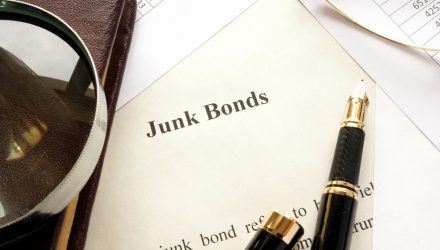Despite concerns about an economic hard landing and a spate of corporate debt downgrades around the world, junk bonds are performing admirably this year. The widely observed Markit iBoxx USD Liquid High Yield Index is higher by 5.87% year-to-date, as of August 10.
That’s nothing to scoff at, particularly when considering that the index is beating standard aggregate bond benchmarks by margins well in excess of two-to-one. Still, it’s always practical to be selective with high yield corporate bond exchange traded funds. The BondBloxx BB-Rated USD High Yield Corporate Bond ETF (XBB) answers that call.
XBB, which debuted in May 2022, follows the ICE BofA BB US Cash Pay High Yield Constrained Index. As its name implies, XBB holds bonds that are rated at the higher end of the junk spectrum. That trait could work in favor of XBB investors. It’s especially relevant when bond market observers are concerned about corporate credit downgrades and the possibility of increased defaults.
XBB Extras
Income is a primary reason why advisors and investors embrace high yield bonds and the related ETFs. XBB makes good on that promise with a 30-day SEC yield of 6.79%, according to issuer data.
Alone, junk bonds’ income proposition is an obvious source of allure. However, the ability of these bonds to generate upside relative to the broader fixed income market is compelling in its own right. In fact, junk corporates have spent the better part of three-plus decades outpacing the broader bond market.
Obviously, credit risk must be assessed when assessing individual junk bonds or funds such as XBB. Fortunately, many borrowers, including some XBB member firms, are financially sturdy and easily service high yield obligations.
“Many of the remaining borrowers in the junk-bond market are larger companies with robust balance sheets and decent financials. Yet their bonds continue to be labeled as being at a higher risk of default,” reported Simon Constable for the Wall Street Journal. “That’s because credit-rating firms have become much more cautious about raising their ratings, due to some classification mistakes made in the past. As a result, some bonds that would have been designated as investment grade no longer are.”
The health of many of the 384 issuers behind XBB’s 837 holdings is indicative of a phenomenon many novice junk bond investors aren’t aware of: the tendency of ratings agencies to be reluctant in upgrading junk debt to investment-grade territory. In other words, some XBB holdings may be less risky than current credit grades imply.
For more news, information, and analysis, visit the Institutional Income Strategies Channel.

